From stage to screen: Best musical movies adapted from theatrical productions
Published 7:00 pm Thursday, November 21, 2024
From stage to screen: Best musical movies adapted from theatrical productions
Heavily influenced by vaudeville, comic opera, and other performing arts, musicals as we know them emerged in the late 19th and early 20th centuries. Around this time, writers shifted from creating comedy and variety shows to stage dramas that integrated story, character, song, and dance while grappling with more mature subject matter.
Shows like “Oklahoma!” and “Show Boat” epitomized these qualities. When “Show Boat” opened in the late 1920s, talking pictures were taking the nation by storm, most notably through 1927’s “The Jazz Singer,” the first musical movie. From the inception of talkies through the 1960s, the movie musical, often adapted from successful Broadway shows, was one of the most popular film genres.
Although the genre began to wane in popularity from the 1970s through the 1990s, the one-two punch of screen original “Moulin Rouge!” (now a smash Broadway hit) and “Chicago” in the early 2000s brought about a resurgence in popularity for the musical film genre that remains to this day, with at least one major movie musical released annually.
In the 21st century, the most anticipated movie musicals tend to be big-screen adaptations of Broadway hits—think 2007’s “Sweeney Todd” or 2012’s “Les Misérables”—which can often take years to develop. The long-awaited adaptation of Stephen Schwartz’s “Wicked”—a show that has remained on Broadway for over 20 years—took over a decade to make. The filmmakers opted to split the story of the witches of Oz into two feature films, the first of which opens nationwide just in time for this year’s Thanksgiving, while “Part Two” will come to theaters during 2025’s holiday season.
To celebrate the “Wicked” premiere and the broader movie musical genre, Stacker ranked the best stage-to-screen musicals of all time using a Stacker score—a weighted index split evenly between IMDb and Metacritic scores.
The film had to have a “musical” listing on IMDb, a Metascore, and at least 10,000 votes to qualify. Ties were broken by the number of IMDb votes. This list only includes films that are stage-to-screen musical adaptations, so films that later received a stage adaptation (like “The Lion King” or “Moulin Rouge!”) or are strictly screen musicals (like “La La Land” or “Joker: Folie à Deux”) were not considered.
Read on to discover the all-time best movie musicals adapted from theatrical stage productions.
You may also like: Osage history comes to Hollywood in ‘Killers of the Flower Moon’
![]()
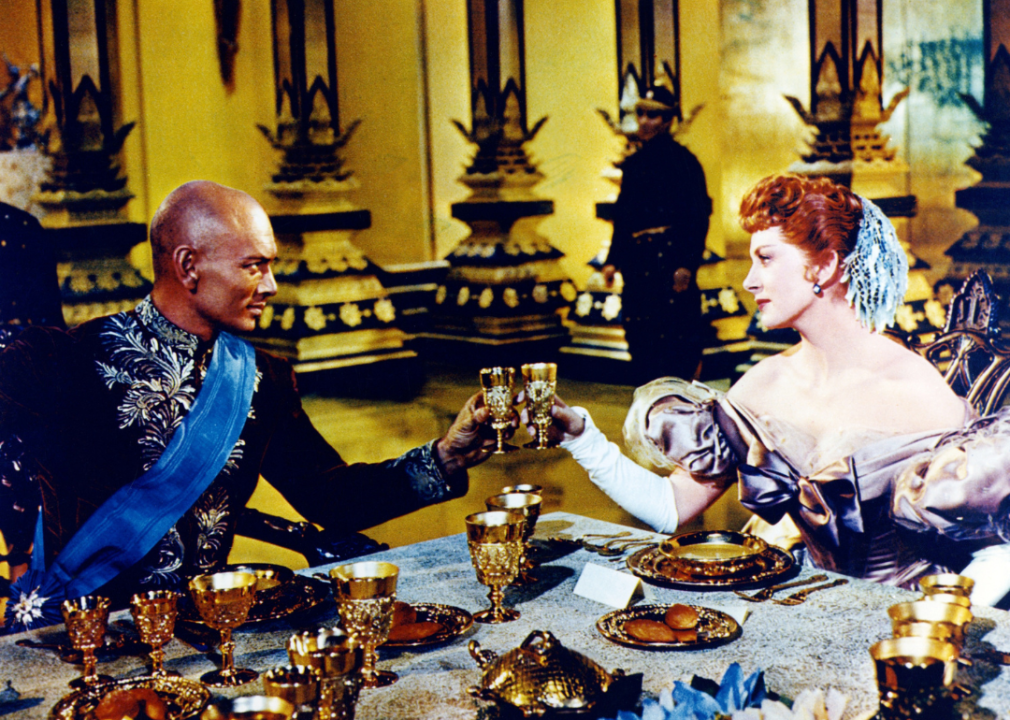
Silver Screen Collection // Getty Images
#15. The King and I (1956)
– Stacker score: 80.7
– Metascore: 72
– IMDb user rating: 7.4
Based on a novel by Margaret Landon, the Rodgers and Hammerstein musical “The King and I” tells the story of a British schoolteacher named Anna, who is summoned by the king of Siam (in modern-day Thailand) to tutor his children.
Premiering on Broadway in 1951, the stage production featured Gertrude Lawrence and Yul Brynner in the leading roles while introducing audiences to memorable showtunes such as “Getting to Know You” and “Shall We Dance?”
The film adaptation cast Deborah Kerr to play Anna, while Brynner reprised his Broadway role as the king. The movie, placing among the top five highest-grossing movies of 1956, was a commercial and critical success. Outlets like The New York Times praised the screenplay for preserving “every bit of the humor and vibrant humanity that flowed through the tender story” originally told in the stage musical.
The movie ultimately matched the awards success of the stage version (which bagged five Tony Awards) by winning five Oscars, including Best Actor for Brynner.
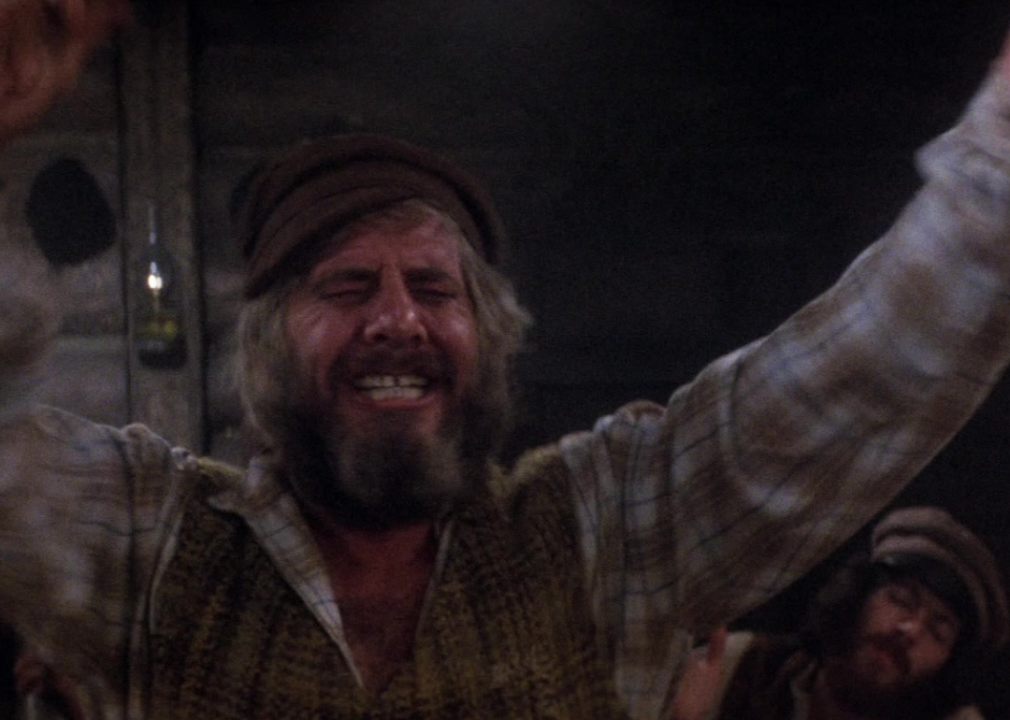
The Mirisch Production Company
#14. Fiddler on the Roof (1971)
– Stacker score: 85.5
– Metascore: 67
– IMDb user rating: 8.0
Known for familiar tunes such as “If I Were a Rich Man” and “Sunrise, Sunset,” “Fiddler on the Roof” tells the story of a Jewish milkman and his daughters in 1905 as they struggle to modernize and survive in the small Russian village of Anatevka. Written by Joseph Stein, Sheldon Harnick, and Jerry Bock, the show was a surprise hit on Broadway in 1964, becoming the first musical to run for over 3,000 performances.
Norman Jewison’s film adaptation is quite faithful to the source material (aside from leaving out two songs, “Now I Have Everything” and “The Rumor”) and was a box office smash when it was first released, even if critics seemed to be less impressed by the film version than they were of the stage version. However, in the half-century since its release, the film has been reconsidered by critics as a classic movie musical and remains a favorite with audiences.
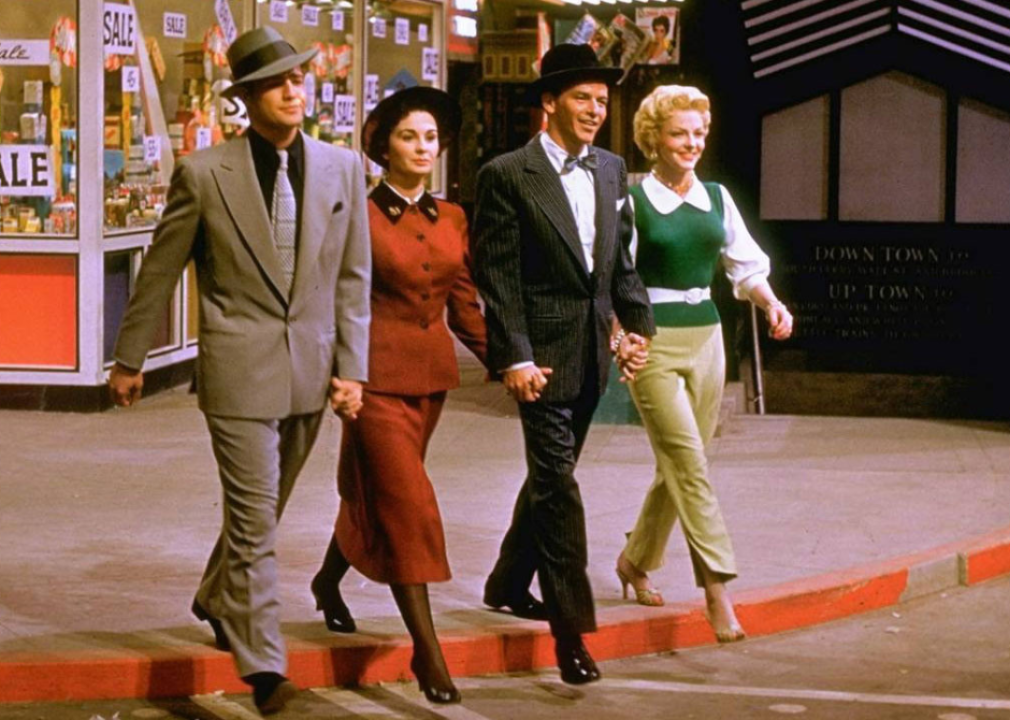
Samuel Goldwyn Productions
#13. Guys and Dolls (1955)
– Stacker score: 86
– Metascore: 77
– IMDb user rating: 7.1
Based on a series of Damon Runyon short stories that parody a New York City filled with gangsters, Frank Loesser’s “Guys and Dolls” opened on Broadway in 1950. It quickly became an audience favorite, running for 1,200 performances, and won six Tony Awards, including Best Musical.
On the coattails of this success, the “Guys and Dolls” film adaptation was greenlit quickly with a bevy of big stars, including Frank Sinatra, Jean Simmons, and in a rare singing role, 1950s heartthrob Marlon Brando as Sky Masterson. Directed by film legend Joseph Mankiewicz, the movie garnered excellent reviews and found success at the box office.
With numerous Broadway revivals, the property remains so popular that a new movie version of “Guys and Dolls”—to be directed by “Chicago” helmer Rob Marshall—is in preproduction as of September 2024.
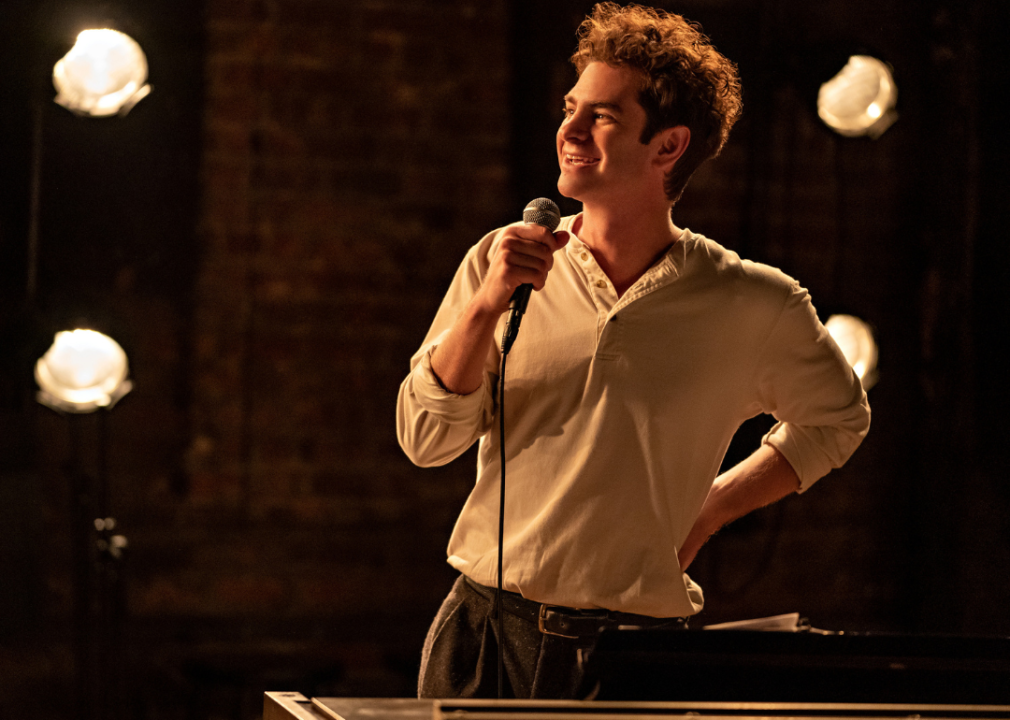
5000 Broadway Productions
#12. tick, tick… BOOM! (2021)
– Stacker score: 86.6
– Metascore: 74
– IMDb user rating: 7.5
A semiautobiographical musical about the joys and perils of the creative process, Jonathan Larson’s “tick, tick… BOOM!” started as a one-person show. However, after the composer’s early death and the popularity of his magnum opus “Rent,” it was reenvisioned as a three-hander and premiered off-Broadway in 2001.
Although not a huge hit when first performed, the show was revived often, and its original cast album became a cult favorite of many, including Lin-Manuel Miranda, who used his newfound clout in Hollywood to get “tick, tick… BOOM!” produced as a full-scale movie musical, marking his feature film directorial debut.
The film had a limited release in theaters before streaming on Netflix, where it was an audience favorite. Andrew Garfield, who played Larson in the film, won a Golden Globe and received an Academy Award nomination for his performance.
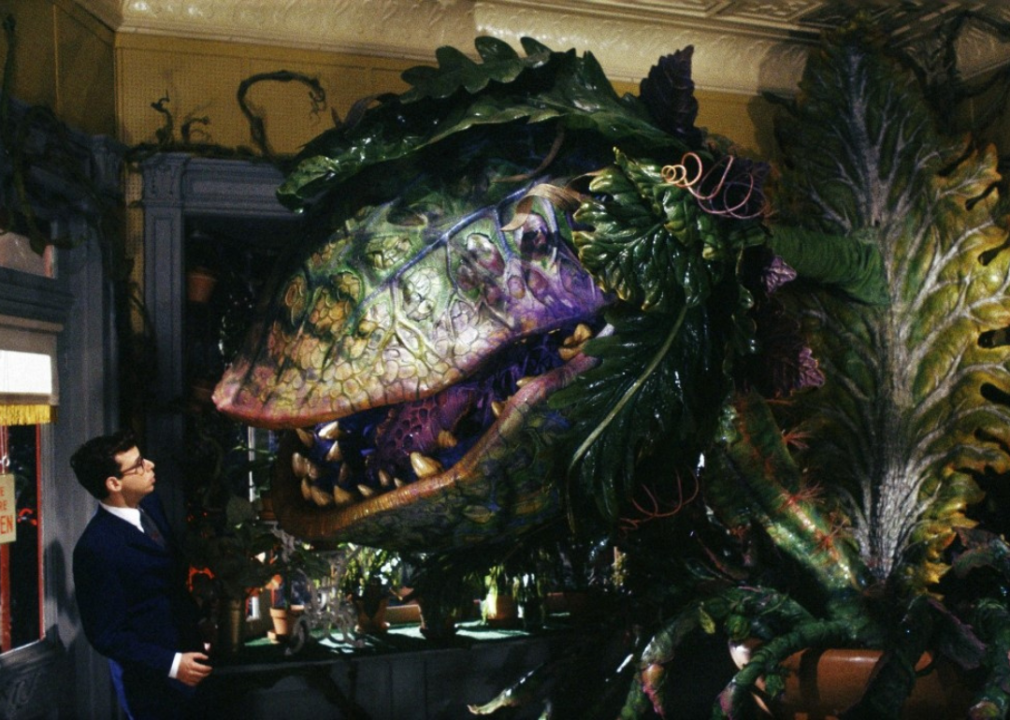
The Geffen Company
#11. Little Shop of Horrors (1986)
– Stacker score: 88.4
– Metascore: 81
– IMDb user rating: 7.1
Based on a B-movie of the same name from 1960, the “Little Shop of Horrors” musical premiered off-off-Broadway in 1982. After a transfer to a larger off-Broadway venue downtown, it ran for five years and was a cult hit. A horror comedy about a man-eating plant and the nerdy man who helps her grow, “Little Shop” solidified the songwriting team Alan Menken and Howard Ashman, leading to the duo’s further success writing classic movies like “Aladdin” and “Beauty and the Beast” for Disney.
The 1986 film adaptation, directed by Jim Henson alum Frank Oz, became a minor hit as well, fondly remembered for all-star performances from Rick Moranis, Steve Martin, and the one and only Ellen Greene, who reprised her iconic role of Audrey for the big screen.
The movie’s success has spurred the show on as a favorite for high school and community theater productions, resulting in a Broadway debut for “Little Shop” in 2003 and a small but mighty off-Broadway revival in 2019, which is still running to sold-out houses five years later.
You may also like: The biggest summer box office hits in US history
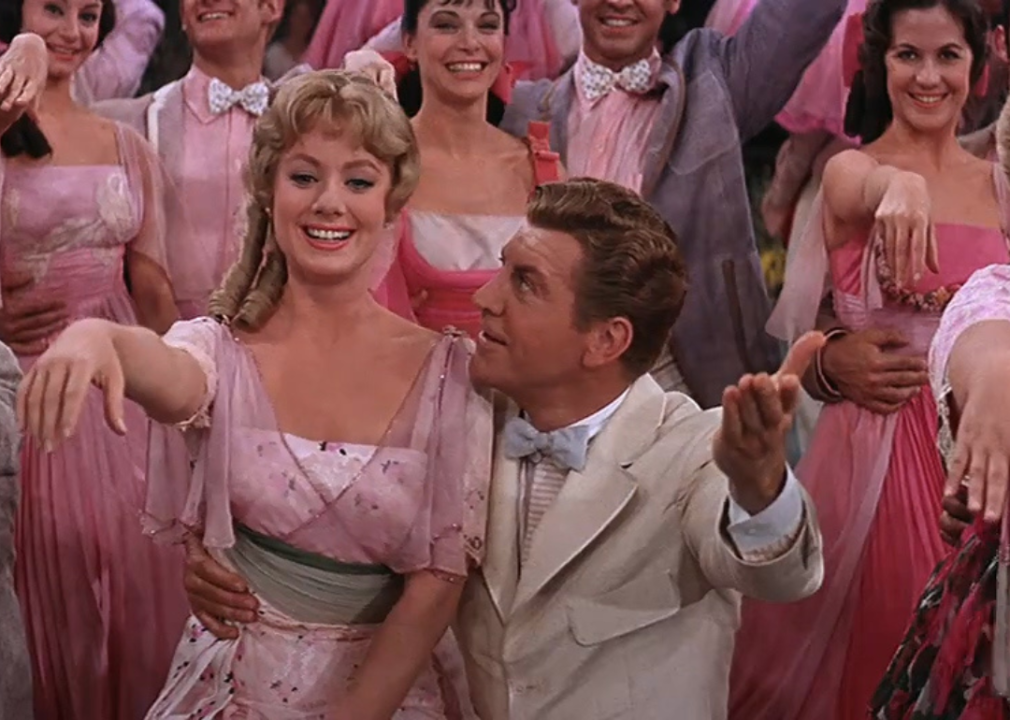
Warner Bros.
#10. The Music Man (1962)
– Stacker score: 89
– Metascore: 76
– IMDb user rating: 7.7
Premiering on Broadway in 1957 to immediate popular acclaim, Meredith Willson’s “The Music Man” made a star out of Robert Preston, ran for 1,375 performances, and won several Tony Awards.
The 1962 film adaptation, directed by Morton DaCosta, was faithful to the original source material and retained Preston in his signature role of Harold Hill, a well-meaning con artist who sells dreams and musical instruments to the residents of a small town in early 20th-century Iowa.
In addition to being a box office hit, it was also nominated for six Oscars and won the Golden Globe for Best Musical. A piece of feel-good Americana, “The Music Man” remains one of the most produced musicals in American high schools and community theaters and was most recently revived on Broadway in a sold-out limited run featuring Hugh Jackman and Sutton Foster.
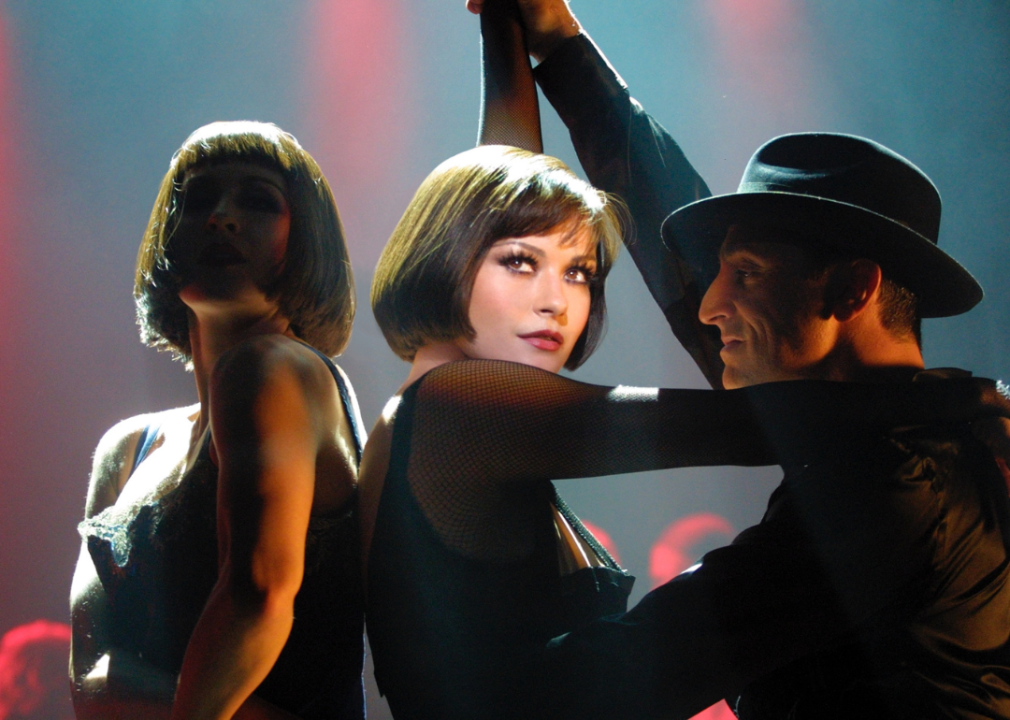
Miramax
#9. Chicago (2002)
– Stacker score: 89
– Metascore: 81
– IMDb user rating: 7.2
Although the original production of “Chicago” was conceived by John Kander, Fred Ebb, and director/choreographer Bob Fosse as a vehicle for legends Gwen Verdon and Chita Rivera and ran for 936 performances, its success in 1975 was overshadowed by “A Chorus Line.”
It was not until 1996, when Walter Bobbie and Ann Reinking staged a concert version that would transfer to Broadway and remains to this day (with more than 10,000 shows and counting), that this tale of two murderesses in Jazz Age Chicago became a classic for the ages.
Following the revival’s smashing success, director and choreographer Rob Marshall conjured up a novel vision for the film adaptation, creating a movie that almost single-handedly saved the film musical from extinction. A favorite with audiences (grossing $170 million domestically), the movie also garnered glowing reviews, with one critic from Salon calling it “sophisticated, brash, sardonic, completely joyful in its execution.”
The film won six Oscars, including Best Picture and Best Supporting Actress (for Catherine Zeta-Jones’ mesmerizing turn as Velma Kelly).
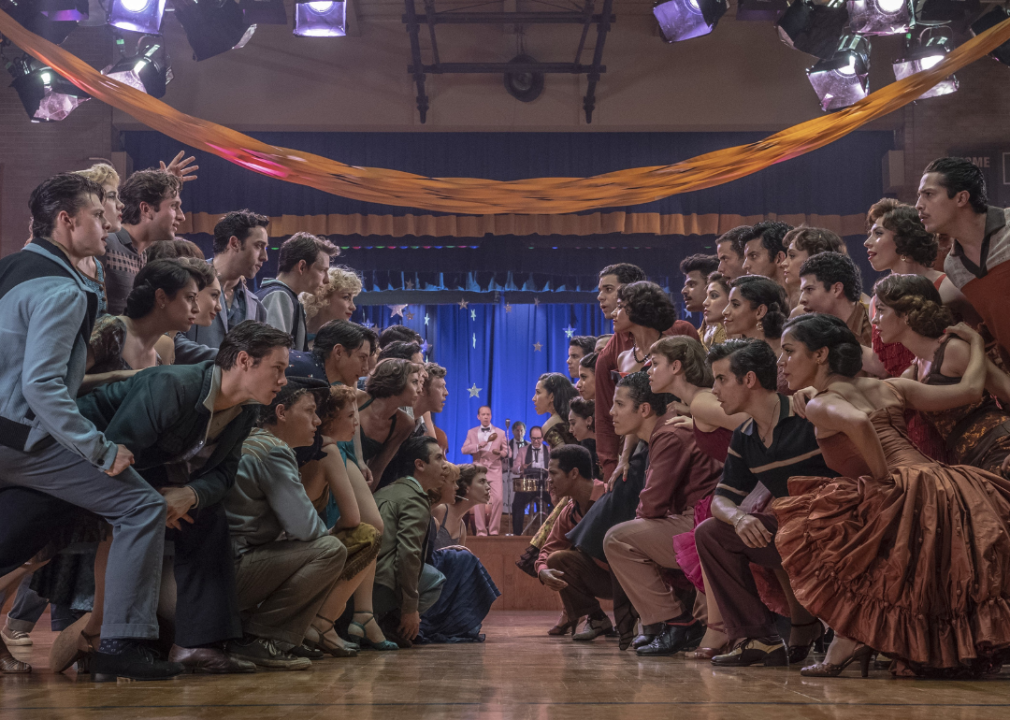
20th Century Studios
#8. West Side Story (2021)
– Stacker score: 90.7
– Metascore: 85
– IMDb user rating: 7.1
Director Steven Spielberg, choreographer Justin Peck, and screenwriter Tony Kushner’s reenvisioning of the classic 1957 stage musical (and subsequent 1961 Best Picture-winning film) sat on a shelf for a year due to the COVID-19 pandemic and ultimately underperformed at the box office, grossing only $38.5 million domestically.
Glowing reviews from critics and a slew of award nominations and wins (including an Oscar for Ariana DeBose as Anita) helped make sure the film found more of an audience through home video and streaming services, where it developed a loyal fan following.
The biggest and possibly best change in Kushner’s version was rewriting the role of Doc (a version of Shakespeare’s Friar Laurence from “Romeo and Juliet”) as a vehicle for veteran actor Rita Moreno, whose character gets to sing the emotional number “Somewhere.” Moreno won the Oscar for playing Anita in the original film six decades earlier.
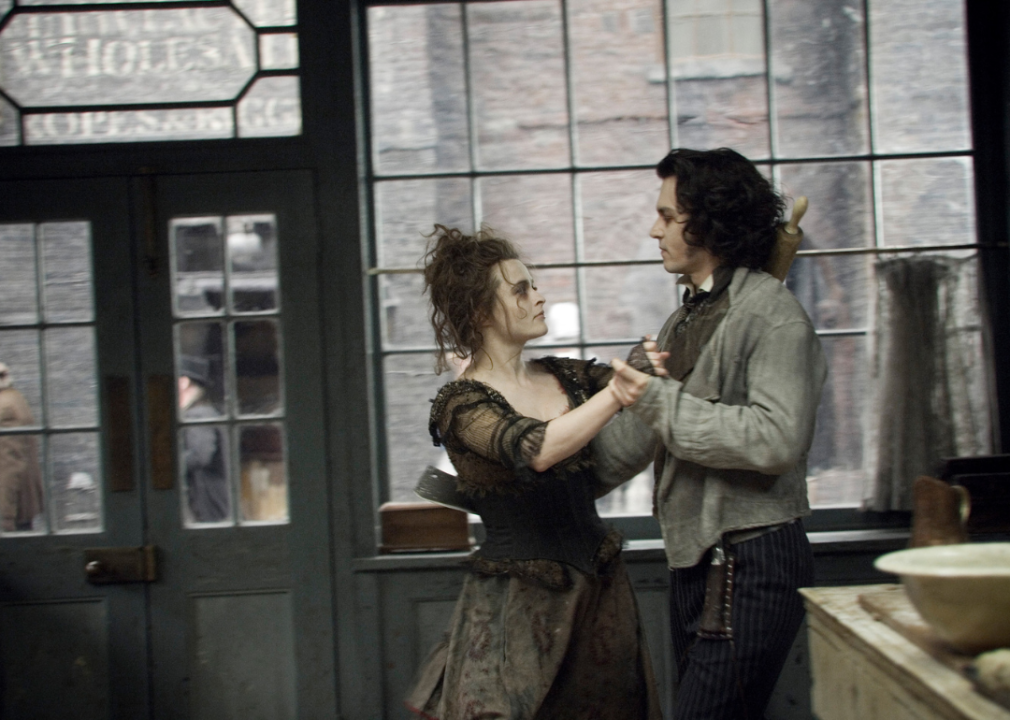
Dreamworks Pictures
#7. Sweeney Todd: The Demon Barber of Fleet Street (2007)
– Stacker score: 90.7
– Metascore: 83
– IMDb user rating: 7.3
It took almost 30 years of developmental drama for “Sweeney Todd” to hit the silver screen. Stephen Sondheim’s musical, rooted in horror aesthetics and grand guignol, is set in a grimy 1840s London. The show was first on Broadway in 1979 starring Angela Lansbury and Len Cariou (who both won Tonys for their roles), and ran for 557 performances. Through its original cast recording and numerous Broadway and West End revivals, “Sweeney Todd” garnered a cult following.
In order for a film adaptation to be greenlit, it needed a director with roots in dark comedy. Enter Tim Burton, whose signature macabre aesthetic and stable of recurring actors (including muse Johnny Depp and Helena Bonham Carter, Burton’s romantic partner at the time) proved a perfect fit for the material.
Burton’s movie was faithful to its source material while also becoming a commercial and critical success. The film won the Golden Globe for Best Picture – Comedy or Musical, while the Academy Awards recognized the film’s production designers with the Best Art Direction Oscar.
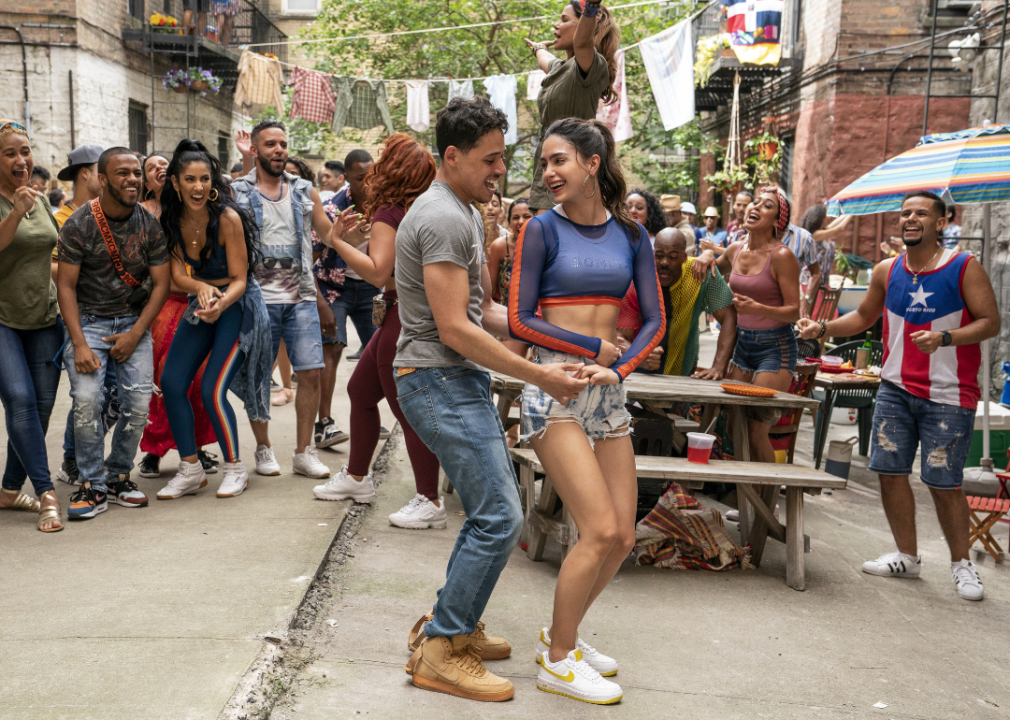
Warner Bros.
#6. In the Heights (2021)
– Stacker score: 91.3
– Metascore: 84
– IMDb user rating: 7.3
Telling the story of a predominantly Dominican American community in the Washington Heights neighborhood of New York City, “In the Heights” announced the arrival of Lin-Manuel Miranda as an actor and composer several years before the release of his massive hit, “Hamilton.” Conceived while he was a student at Wesleyan University, the show made it to Broadway in 2008 (with Miranda playing the lead role), won the Tony Award for Best Musical, and ran for 1,185 performances (or almost three years).
It took a decade of development for the film adaptation to become a reality. Eventually, it was produced under director Jon M. Chu (at the helm for both “Wicked” movies)—it was a critical success but grossed only $45 million worldwide against a $55 million budget.
Despite lackluster returns, the film gained a large audience on streaming services, and the movie’s soundtrack—which includes favorites from the stage show like “96,000” and “Carnaval del Barrio”—peaked at #1 on Billboard’s soundtracks chart.
You may also like: Best movie from the year you were born
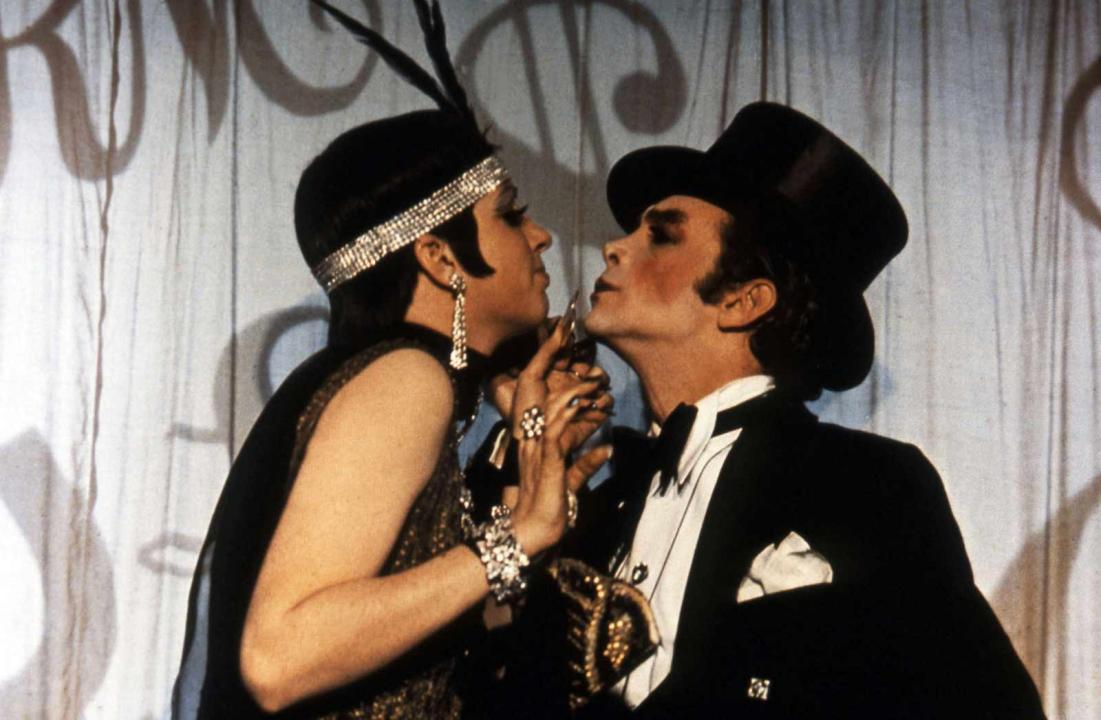
Allied Artists Pictures
#5. Cabaret (1972)
– Stacker score: 91.9
– Metascore: 80
– IMDb user rating: 7.8
Telling the story of a seedy nightclub in late 1920s Berlin during the rise of Nazism, John Kander, Fred Ebb, and Joe Masteroff’s musical is based on the autobiographical writing of Christopher Isherwood. The musical opened on Broadway in 1966 to critical and popular success, winning the Tony Award for Best Musical and running for 1,166 performances.
A musical theater piece ripe for directorial reinvention, the film version of “Cabaret” was the first film project entirely controlled by the legendary director/choreographer Bob Fosse. Quite different from its stage counterpart, Fosse’s cinematic vision of “Cabaret” included new subplots, cut out several songs, and created two new ones. However, it is Liza Minelli’s Oscar-winning turn as wild-child singer Sally Bowles (and her performance of those two new songs, “Mein Herr” and “Maybe This Time”) that keep the film feeling fresh for modern audiences.
These two songs, though created for the screen, are now often written into revivals of the stage show, including the ongoing production of “Cabaret at the Kit Kat Club,” which, as of November 2024, stars “American Idol” alum Adam Lambert and Auli’i Cravalho of “Moana” fame.
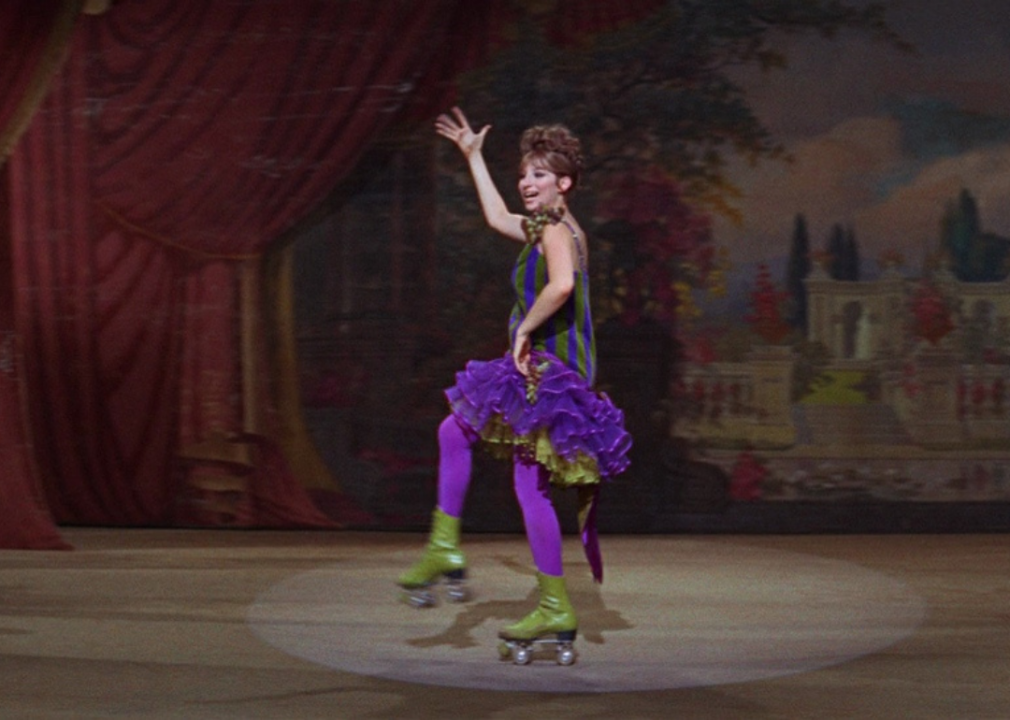
Columbia Pictures
#4. Funny Girl (1968)
– Stacker score: 94.2
– Metascore: 88
– IMDb user rating: 7.4
Telling the life story of legendary comedian Fanny Brice, “Funny Girl” arrived on Broadway in 1964, ran for 1,348 performances, and introduced the world to another legend—the one and only Barbra Streisand. Although robbed of a Tony Award win, Streisand did become an “it” girl and quickly secured the role of Fanny for the big-screen adaptation.
Beyond being a monster hit, the film garnered Streisand the Academy Award for Best Actress in 1969, tying with Katharine Hepburn (for “The Lion in Winter”). Directed by film legend William Wyler and co-starring Egyptian heartthrob Omar Sharif, the movie and Streisand’s performance remained so indelible that no “Funny Girl” revival was staged on Broadway until 2022.
While certain songs from the show (“Cornet Man,” “The Music That Makes Me Dance”) did not make it into the film, this did make room for the inclusion of Brice’s signature song (“My Man”) as Streisand’s show-stopping 11 o’clock number.
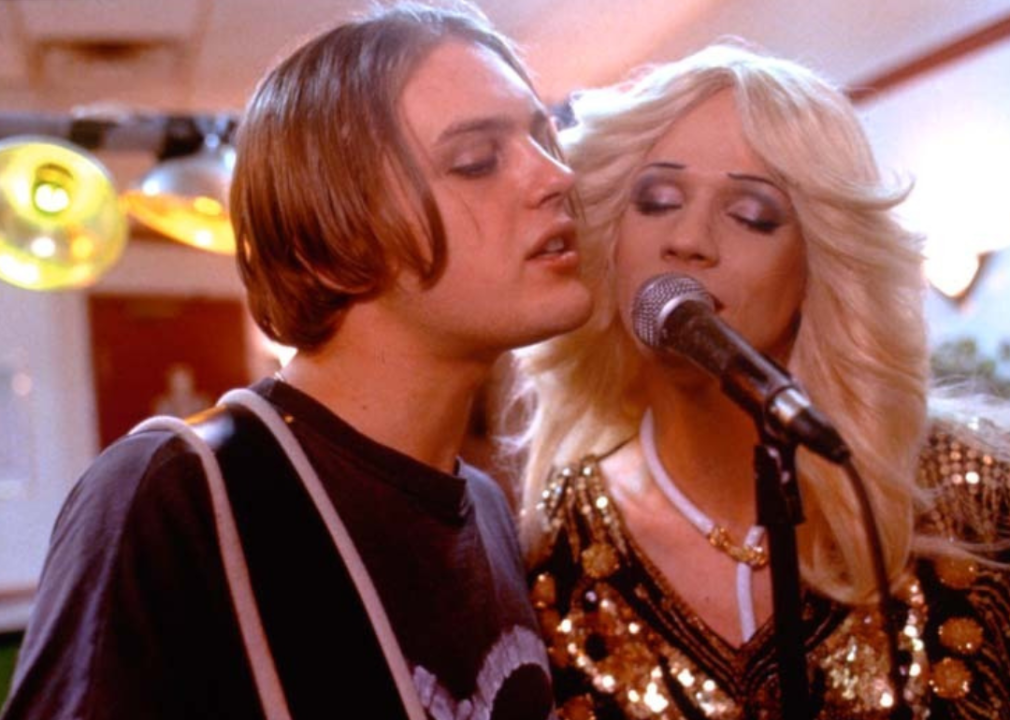
Killer Films
#3. Hedwig and the Angry Inch (2001)
– Stacker score: 94.2
– Metascore: 85
– IMDb user rating: 7.7
Inspired by 1970s glam rock and telling the life story of a genderqueer front person for a punk band, “Hedwig and the Angry Inch” started as a showcase for book writer and star John Cameron Mitchell, with music by Stephen Trask. It ran off-Broadway at the Jane Street Theater for 857 performances while also winning a pair of special citations at the Obie Awards.
Capitalizing on this success, Mitchell secured funding for an independent film adaptation that he directed. The movie version of “Hedwig” was critically well received, particularly in the independent film world, but did not receive a full national release at multiplexes.
However, the film quickly became a cult classic and inspired numerous revivals of the stage show, including its first production on Broadway in 2014 starring Neil Patrick Harris, which won that year’s Tony Award for Best Revival of a Musical.
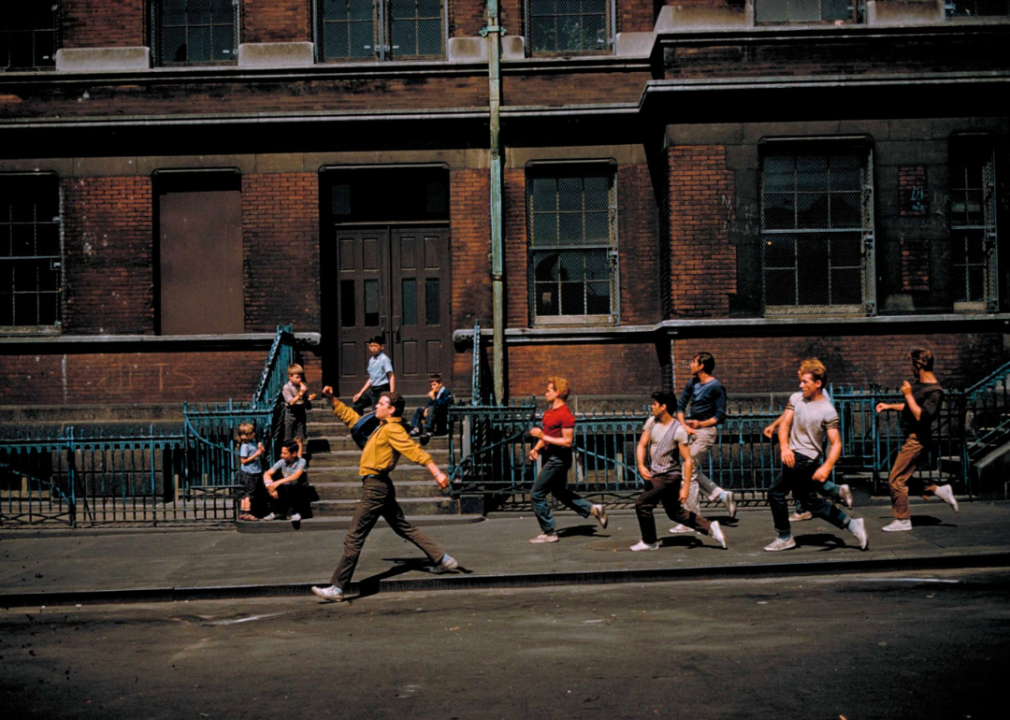
The Mirisch Corporation
#2. West Side Story (1961)
– Stacker score: 94.2
– Metascore: 86
– IMDb user rating: 7.6
A modern retelling of Shakespeare’s “Romeo and Juliet,” recast with feuding white and Puerto Rican gang members, “West Side Story” opened on Broadway in 1957 to solid reviews and ran for a respectable 732 performances. However, it took the release of the film version, directed by Robert Wise and Jerome Robbins, for it to achieve its status as one of the best musicals of all time.
Retaining nearly all of Robbins’ breathtaking choreography while featuring the iconic music from composer Leonard Bernstein and lyricist Stephen Sondheim, the faithful adaptation went on to become one of the highest-grossing movies of 1961.
The movie won 10 Academy Awards out of 11 nominations, including Best Picture (plus a special award for Robbins’ achievement in dance), making it the record-holder for the most Oscar wins for a musical film. Although Steven Spielberg’s 2021 remake is highly lauded, critics and viewers alike still give the original, classic film the edge.
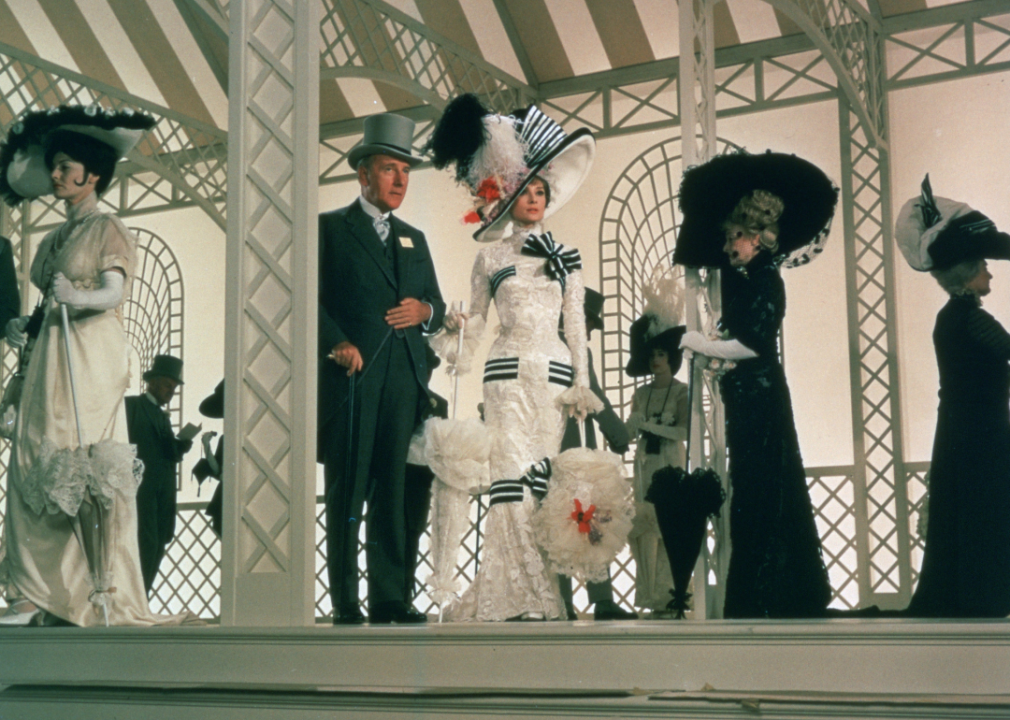
Warner Bros.
#1. My Fair Lady (1964)
– Stacker score: 100
– Metascore: 95
– IMDb user rating: 7.7
When “My Fair Lady”—Alan Jay Lerner and Frederick Loewe’s musical adaptation of George Bernard Shaw’s classic play “Pygmalion”—opened on Broadway, it made a young Julie Andrews the toast of New York. Her performance as Eliza Doolittle, a Cockney woman who becomes the pet project of the pompous Professor Henry Higgins, helped the show run for 2,717 performances (a record at the time) and garnered six Tony awards, including Best Musical.
Andrews’ star quality at the time, however, was not enough to convince movie producers that she could anchor a feature film. Considered a bigger star back then, Audrey Hepburn was cast in the movie version—even though her limited vocal abilities required the use of a singing stand-in (unsung hero Marni Nixon).
Although the “My Fair Lady” film, directed by legend George Cukor, was indeed a giant success with critics and audiences—winning eight Oscars, including Best Picture, and ranking as the second highest-grossing film of the year—Julie Andrews did get the last laugh; the same year, she took home the Best Actress Oscar for “Mary Poppins,” which outgrossed the film adaptation of the show that made her a Broadway sensation. Regardless, “My Fair Lady” remains a classic, due in large part to Hepburn’s performance and her chemistry with co-star Rex Harrison.
Story editing by Tim Bruns. Copy editing by Kristen Wegrzyn. Photo selection by Lacy Kerrick.
You may also like: Highest-grossing genres at the 2023 box office





